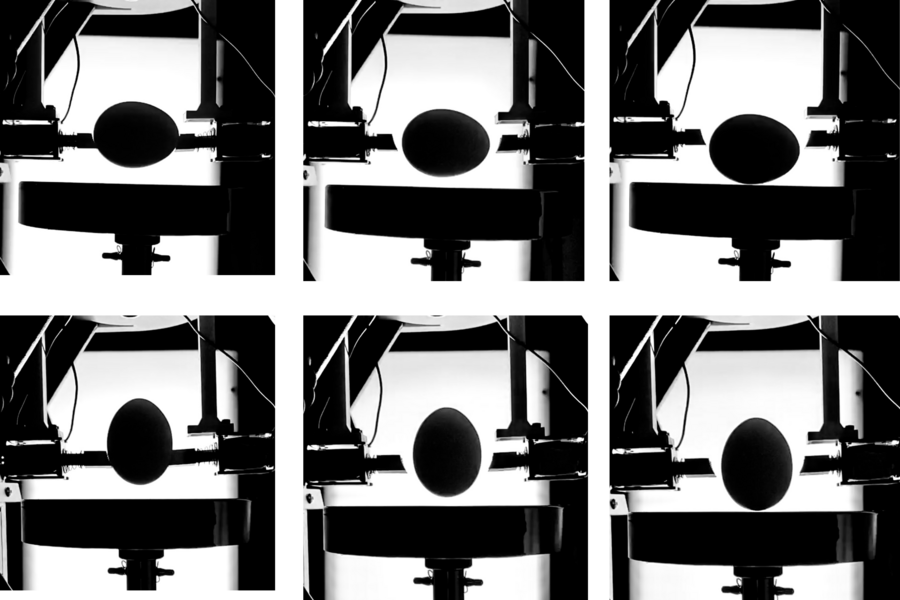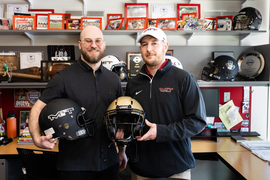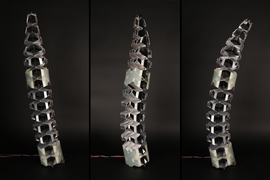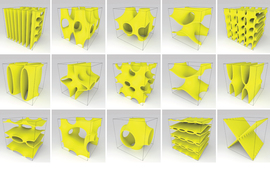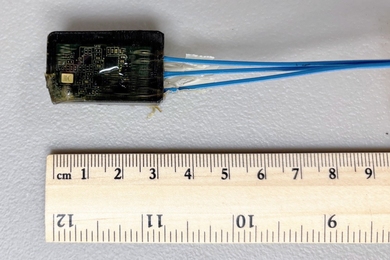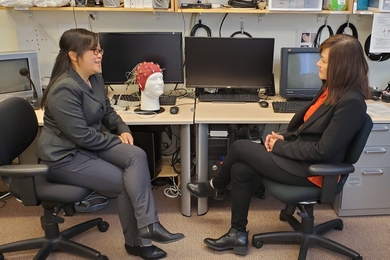It’s been a scientific truth so universally acknowledged that it’s taught in classrooms and repeated in pop-science videos: An egg is strongest when dropped vertically, on its ends. But when MIT engineers actually put this assumption to the test, they cracked open a surprising revelation.
Their experiments revealed that eggs dropped on their sides — not their tips — are far more resilient, thanks to a clever physics trick: Sideways eggs bend like shock absorbers, trading stiffness for superior energy absorption. Their open-access findings, published today in Communications Physics, don’t just rewrite the rules of the classic egg drop challenge — they’re a lesson in intellectual humility and curiosity. Even “settled” science can yield surprises when approached with rigor and an open mind.
At first glance, an eggshell may seem fragile, but its strength is a marvel of physics. Crack an egg on its side for your morning omelet and it breaks easily. Intuitively, we believe eggs are harder to break when positioned vertically. This notion has long been a cornerstone of the classic “egg drop challenge,” a popular science activity in STEM classrooms across the country that introduces students to physics concepts of impact, force, kinetic energy, and engineering design.
The annual egg drop competition is a highlight of first-year orientation in the MIT Department of Civil and Environmental Engineering. “Every year we follow the scientific literature and talk to the students about how to position the egg to avoid breakage on impact,” says Tal Cohen, associate professor of civil and environmental engineering and mechanical engineering. “But about three years ago, we started to question whether vertical really is stronger.”
That curiosity sparked an initial experiment by Cohen’s research group, which leads the department’s egg drop event. They decided to put their remaining box of eggs to the test in the lab. “We expected to confirm the vertical side was tougher based on what we had read online,” says Cohen. “But when we looked at the data — it was really unclear.”
What began as casual inquiry evolved into a research project. To rigorously investigate the strength of both egg orientations, the researchers conducted two types of experiments: static compression tests, which applied gradually increasing force to measure stiffness and toughness; and dynamic drop tests, to quantify the likelihood of breaking on impact.
“In the static testing, we wanted to keep an egg at a standstill and push on it until it cracked,” explains Avishai Jeselsohn, an undergraduate researcher and an author in the study. “We used thin paper supports to precisely orient the eggs vertically and horizontally.”
What the researchers found was it required the same amount of force to initiate a crack in both orientations. “However, we noticed a key difference in how much the egg compressed before it broke, says Joseph Bonavia, PhD candidate who contributed to the work. “The horizontal egg compressed more under the same amount of force, meaning it was more compliant.”
Using mechanical modeling and numerical simulations to validate results of their experiments, the researchers concluded that even though the force to crack the egg was consistent, the horizontal eggs absorbed more energy due to their compliance. “This suggested that in situations where energy absorption is important, like in a drop, the horizontal orientation might be more resilient. We then performed the dynamic drop tests to see if this held true in practice,” says Jeselsohn.
The researchers designed a drop setup using solenoids and 3D-printed supports, ensuring simultaneous release and consistent egg orientation. Eggs were dropped from various heights to observe breakage patterns. The result: Horizontal eggs cracked less frequently when dropped from the same height.
“This confirmed what we saw in the static tests,” says Jeselsohn. “Even though both orientations experienced similar peak forces, the horizontal eggs absorbed energy better and were more resistant to breaking.”
Challenging common notions
The study reveals a misconception in popular science regarding the strength of an egg when subjected to impact. Even seasoned researchers in fracture mechanics initially assumed that vertical oriented eggs would be stronger. “It’s a widespread, accepted belief, referenced in many online sources,” notes Jeselsohn.
Everyday experience may reinforce that misconception. After all, we often crack eggs on their sides when cooking. “But that’s not the same as resisting impact,” explains Brendan Unikewicz, a PhD candidate and author on the paper. “Cracking an egg for cooking involves applying locally focused force for a clean break to retrieve the yolk, while its resistance to breaking from a drop involves distributing and absorbing energy across the shell.”
The difference is subtle but significant. A vertically oriented egg, while stiffer, is more brittle under sudden force. A horizontal egg, being more compliant, bends and absorbs energy over a greater distance — similar to how bending your knees during a fall softens the blow.
“In a way, our legs are ‘weaker’ when bent, but they’re actually tougher in absorbing impact,” Bonavia adds. “It’s the same with the egg. Toughness isn’t just about resisting force — it’s about how that force is dissipated.”
The research findings offer more than insight into egg behavior — they underscore a broader scientific principle: that widely accepted “truths” are worth re-examining.
Which came first?
“It’s great to see an example of ‘received wisdom’ being tested scientifically and shown to be incorrect. There are many such examples in the scientific literature, and it’s a real problem in some fields because it can be difficult to secure funding to challenge an existing, ‘well-known’ theory,” says David Taylor, emeritus professor in the Department of Mechanical, Manufacturing and Biomedical Engineering at Trinity College Dublin, who was not affiliated with the study.
The authors hope their findings encourage young people to remain curious and recognize just how much remains to be discovered in the physical world.
“Our paper is a reminder of the value in challenging common notions and relying on empirical evidence, rather than intuition,” says Cohen. “We hope our work inspires students to stay curious, question even the most familiar assumptions, and continue thinking critically about the physical world around them. That’s what we strive to do in our group — constantly challenge what we’re taught through thoughtful inquiry.”
In addition to Cohen, who serves as senior author on the paper, co-authors include lead authors Antony Sutanto MEng ’24 and Suhib Abu-Qbeitah, a postdoc at Tel Aviv University, as well as the following MIT affiliates: Avishai Jeselsohn, an undergraduate in mechanical engineering; Brendan Unikewicz, a PhD candidate in mechanical engineering; Joseph Bonavia, a PhD candidate in mechanical engineering; Stephen Rudolph, a lab instructor in civil and environmental engineering; Hudson Borja da Rocha, an MIT postdoc in civil and environmental engineering; and Kiana Naghibzadeh, Engineering Excellence Postdoctoral Fellow in civil and environmental engineering. The research was funded by U.S. Office of Naval Research with support from the U.S. National Science Foundation.
